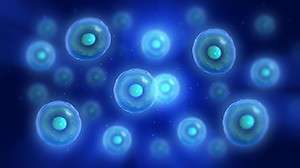Stem Cell Therapy
 Stem cell therapy is a form of regenerative medicine that utilizes the body’s natural healing mechanism to treat various conditions.
Stem cell therapy is a form of regenerative medicine that utilizes the body’s natural healing mechanism to treat various conditions.
Stem cells are being used in regenerative medicine to renew and repair diseased or damaged tissues, and have shown promising results in treatments of various orthopedic, cardiovascular, neuromuscular and autoimmune conditions.
Types of Stem Cells
There are two major types of stem cells: embryonic stem cells and adult stem cells. Embryonic stem cells (ESCs) are stem cells derived from human embryos. They are pluripotent, which means they have the ability to develop into almost any of the various cell types of the body.
As the embryo develops and forms a baby, stem cells are distributed throughout the body where they reside in specific pockets of each tissue, such as the bone marrow and blood. As we age, these cells function to renew old and worn out tissue and cells. These are called adult stem cells or somatic stem cells. Like embryonic stem cells, adult stem cells can also turn into more than one cell type, but their differentiation is restricted to a limited number of cell types.
Use of Stem Cells in Orthopedics
The unique self-regeneration and differentiating ability of embryonic stem cells can be used in regenerative medicine. These stem cells can be derived from eggs collected during IVF procedures with informed consent from the patient. However, many questions have been raised on the ethics of destroying a potential human life for the treatment of another.
Adult stem cells can be harvested from many areas in the body. These include adipose tissue (fat), bone marrow and peripheral blood. The mesenchymal stem cell is the most commonly harvested. These have the ability to turn into cells that form the musculoskeletal system such as tendons, ligaments, and articular cartilage. To obtain stem cells from the bone marrow, a needle is inserted into the iliac crest of the pelvic bone to extract the stem cells.
Currently, stem cell therapy is used to treat various degenerative conditions of the shoulder, knees, hips, and spine. Stem cells are also being used in the treatment of various soft tissue (muscle, ligaments and tendons) as well as bone-related injuries.
Who is a Good Candidate for a Stem Cell Procedure?
You may be a good candidate for stem cell therapy if you have been suffering from joint pain and want to improve your quality of life while avoiding complications related to invasive surgical procedures.
Preparing for the Procedure
- It is important that you stop taking any non-steroidal anti-inflammatory drugs (NSAIDs) at least two weeks before your procedure.
- Preparing for a stem cell procedure is relatively easy and your doctor will give you specific instructions depending on your condition.
Stem cell procedure
The procedure begins with your doctor extracting stem cells from your own bone marrow. Bone marrow is usually aspirated from your hip region. Your doctor will first clean and numb your hip area. A needle is then introduced into an area of your pelvic bone known as the iliac crest. Bone marrow is then aspirated using a special syringe and the sample obtained is sent to the laboratory. In the laboratory, the aspirate is spun in a machine for 10 to 15 minutes and a concentrated stem cell sample is separated.
Your doctor then cleans and numbs your affected area to be treated and then, under the guidance of special x-rays, injects the stem cells into the diseased region. The whole procedure usually takes less than one hour and you may return home on the same day of the procedure.
Post-procedure Care
- You will most likely be able to return to work the next day following your procedure.
- You will need to take it easy and avoid any load bearing activities for at least two weeks following your procedure.
- You will need to refrain from taking non-steroidal, anti-inflammatory medications (NSAIDS) for a while as this can affect the healing process of your body.
Advantages
- Stem cell therapy is a relatively simple procedure that avoids the complications associated with invasive surgical procedures.
- As stem cell therapy uses the cells derived from your own body it reduces the chances of an immune rejection.
Disadvantages
- There is a general lack of data about the long-term effects of stem cell therapy as it is a newer procedure and represents a newer form of treatment.
Risks and complications
Stem cell therapy is generally considered a safe procedure with minimal complications, however, as with any medical procedure, complications can occur.
Some risks factors related to stem cell therapy include infection as bacteria, viruses or other pathogens that can cause disease may be introduced during the preparation process.
The procedure to either remove or inject the cells also has the risk of introducing an infection to the damaged tissue into which they are injected. Rarely, an immune reaction may occur from injected stem cells.






